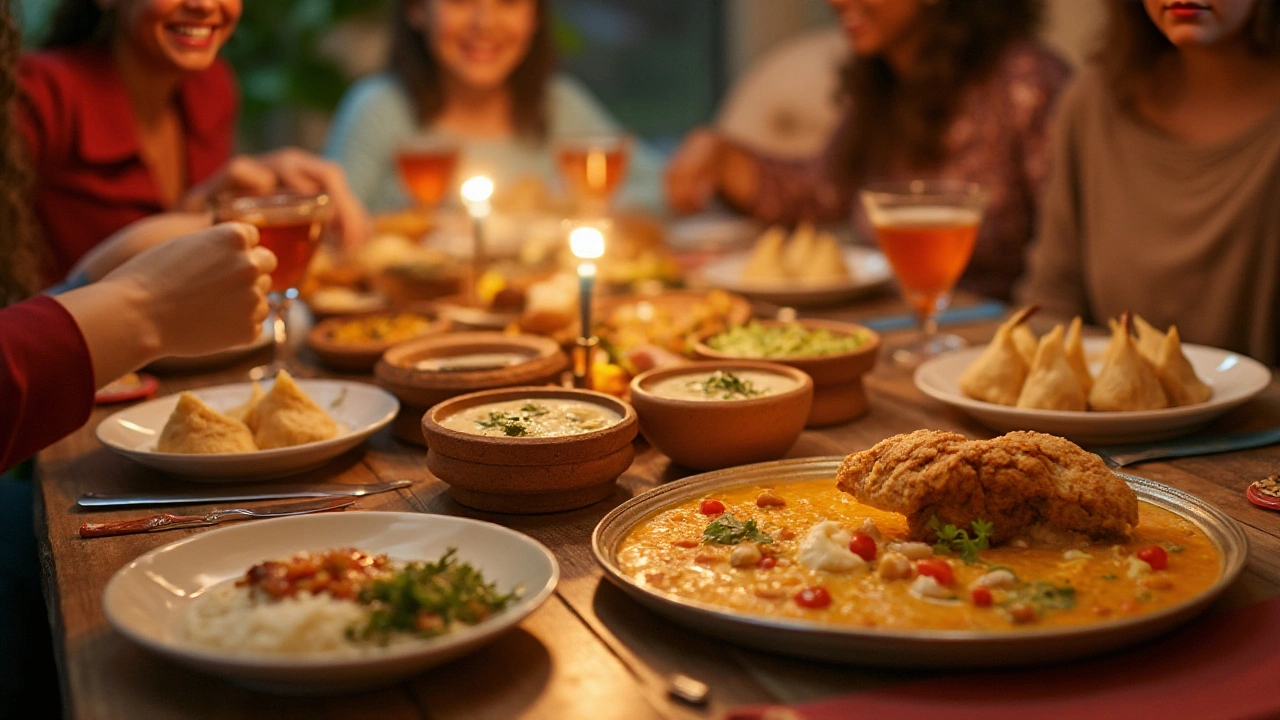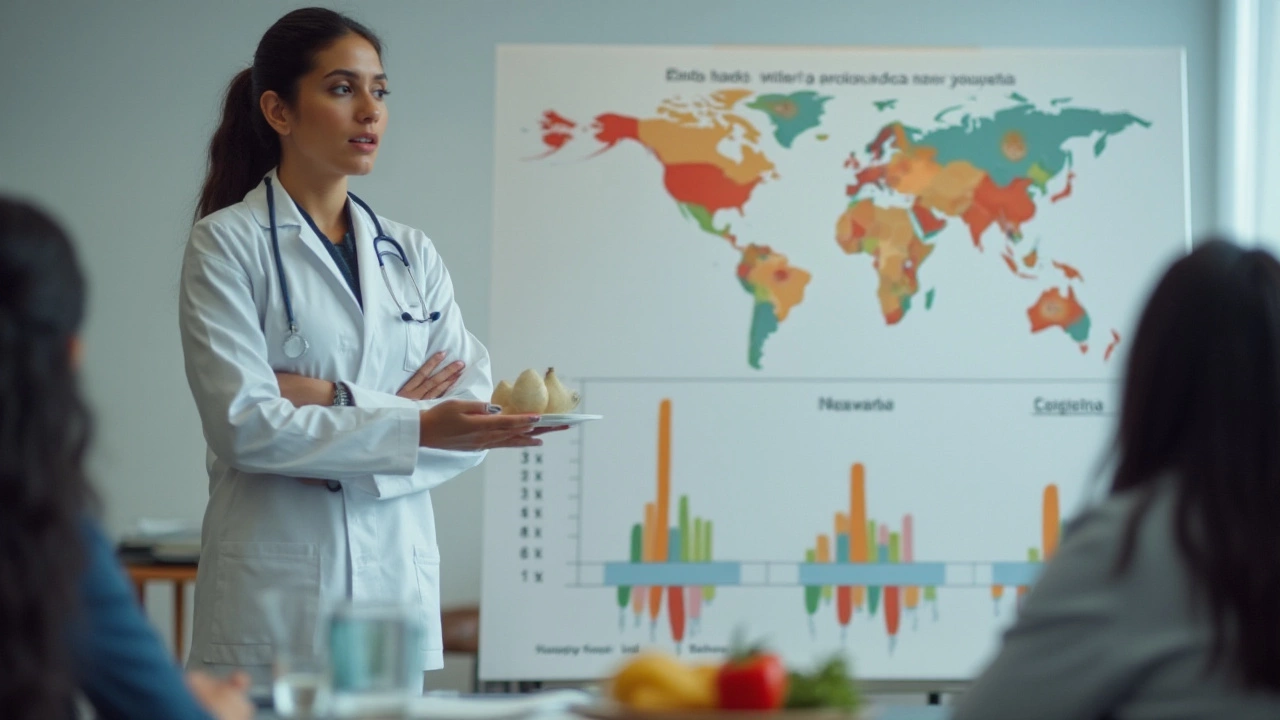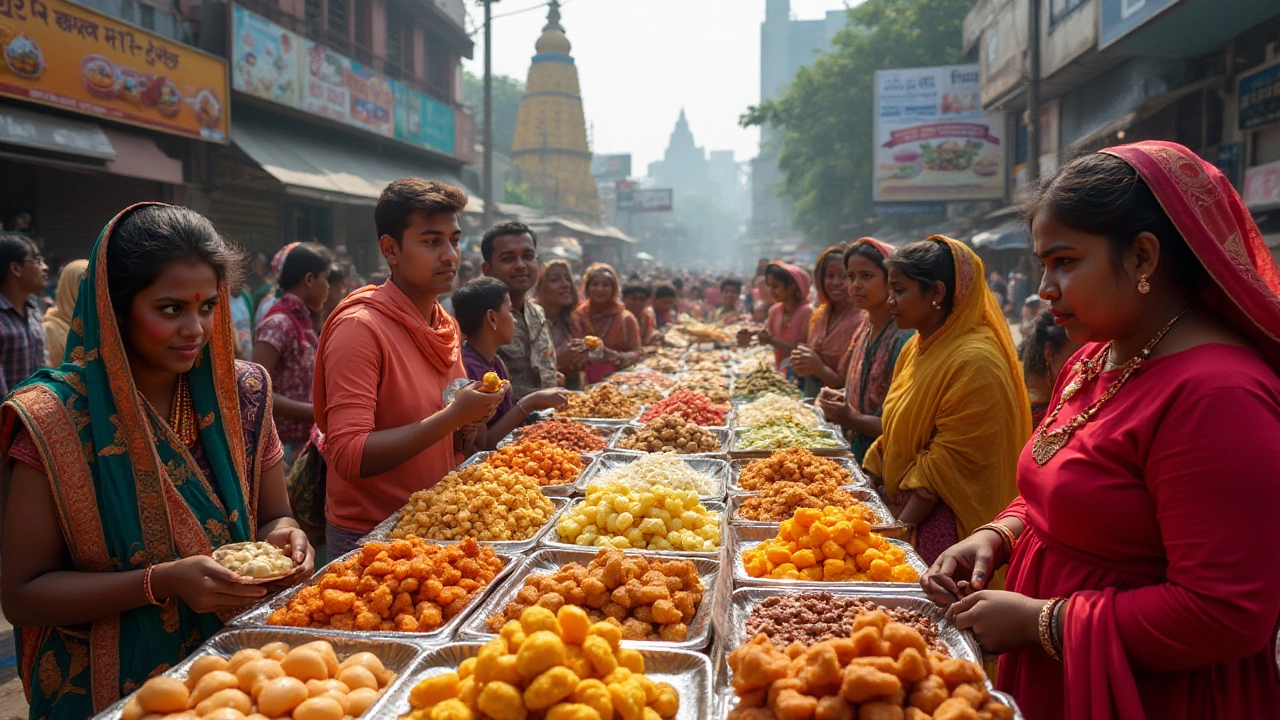Navigating the world of nutrition, it's fascinating—and somewhat alarming—to discover how diverse global eating habits truly are. Many countries grapple with what can only be described as dietary challenges, some of which stem from deep-rooted cultural practices and economic constraints. As we journey through the details of these diets, it becomes evident how such habits impact public health and the emerging role of medical tourism.
The allure of medical tourism is undeniable, especially when tied to healthier living aspirations. Yet, understanding the nature of unhealthy diets in particular regions can guide us toward more informed decisions about where and how to seek food that nourishes.
- Factors Contributing to Unhealthy Diets
- Countries with the Worst Eating Habits
- Impact on Health and Society
- Role of Medical Tourism in Promoting Healthier Lifestyles
- Tips for Healthier Eating Habits While Traveling
Factors Contributing to Unhealthy Diets
Exploring the reasons behind unhealthy diets across various countries reveals a tangled web of unique challenges. Numerous factors play a role in shaping the dietary habits that lead to poor nutrition. Economic development is often at the forefront, with countries experiencing rapid industrialization typically seeing an influx of processed foods. These foods are abundant in calories but deficient in essential nutrients, making them poor substitutes for traditional, healthier meals. In urban environments, busy lifestyles further exacerbate reliance on fast foods, as quick meal options become a staple for many city dwellers seeking convenience.
Another major contributor is cultural tradition. In some places, the preference for rich, indulgent cuisine runs deep. For instance, countries with diets high in sugar, salt, and fats reflect long-standing cultural practices. These traditional dishes, although delicious, often lack the balance needed for a healthy diet. Additionally, globalization introduces Western dietary patterns that influence local customs, often tilting the balance towards less healthy choices.
Education also plays a significant role. Regions with limited access to nutrition education often lack awareness regarding the impacts of diet on health. This gap results in populations continuing dietary habits that are not nutritionally beneficial. The link between diet and disease may not be well-understood, making prevention of diet-related illnesses challenging.
Food availability and accessibility further compound these issues. In some developing nations, access to fresh produce and lean proteins is limited. Instead, cost-effective but nutrient-poor foods dominate local markets. This scenario often results from inadequate agricultural infrastructure and import reliance, which can inflate prices for healthier food items. A lack of governmental policies promoting nutritional health also leaves gaps in addressing these challenges.
"Poor diet is now the leading cause of poor health in the world, causing one in five deaths globally," emphasizes Dr. Christopher Murray, from the University of Washington. This statement underscores the critical need to address these dietary issues, as the impact is not only individual but also societal in its reach.
Moreover, the influence of food marketing cannot be underestimated. Aggressive advertising campaigns, especially those targeting sugary and high-fat products toward children and young adults, have striking impacts on dietary choices. As these marketing efforts intensify, they normalize unhealthy eating habits, making it difficult for healthier options to gain traction among consumers.
Addressing these factors requires a multi-faceted approach involving policymakers, health educators, and community leaders. By improving education on healthy choices, creating incentives for nutritious foods, and protecting traditional diets from modern adulteration, we can begin addressing the significant issues that lead to unhealthy diets worldwide.
Countries with the Worst Eating Habits
Recognizing the world's unhealthiest diets requires a trek through regions where nutritional balance is routinely upended by local customs and economic factors. In America, for example, the fast-paced lifestyle often leads individuals to rely heavily on processed and fast foods, which are high in saturated fats, sugars, and sodium. This preference significantly contributes to alarming obesity rates and related health problems like diabetes and heart disease. Imagine a typical day that starts with a calorie-laden breakfast sandwich from a drive-thru and ends with dinner in front of the TV, a bag of chips in hand—it's a reality for many.
Halfway across the globe, Mexico is battling its own dietary demons with an abundant consumption of sugary beverages. Statistics show that Mexico has one of the highest rates of soda consumption per capita in the world. This craving for sweets has fueled an epidemic of obesity and type 2 diabetes. In response to these challenges, the government has tried to curb consumption through taxes and public health campaigns. Nonetheless, it remains an uphill battle as cultural habits deeply rooted in tradition persist.
In Eastern Europe, Ukraine's dietary concerns lie in heavy and often greasy meals, dominated by foods like pork and potato dishes. Despite the abundance of fresh produce in the region, many still choose convenience and tradition over healthier alternatives, leading to high cholesterol and cardiovascular disease. Recently, calls for reform in everyday culinary habits have grown louder, yet they must compete with deeply ingrained cultural appetites that prioritize taste and texture over nutritional content.
“We face major challenges in reshaping diets both on a societal and individual level. It takes widespread awareness and accessibility to alter the deeply held dietary preferences.” — Dr. Michael Greger, Nutrition Expert
Meanwhile, Japan offers a stark contrast with its low obesity rates until one explores the spike in high blood pressure and sodium-related issues. This anomaly is mainly due to traditional diets rich in salt-preserved foods, such as pickles and miso soup. While portions are smaller, the dense salt content poses significant health risks, exemplifying how even a seemingly healthy diet can carry hidden dangers.
As we delve into these regions struggling with nutritional imbalances, the global eating habits paint a complex picture. The impact of nutrition—or the lack thereof—echoes through generations, emphasizing the need for change. Understanding these ingrained habits not only sheds light on potential health risks but also opens the door for informed adjustments. For those involved in medical tourism, recognizing these patterns is crucial in searches for healthier options.

Impact on Health and Society
As we scrutinize the far-reaching consequences of unhealthy diet patterns on both individual health and wider societal structures, the picture becomes more complex than one might initially imagine. Countries where diets are dominated by processed foods, excessive sugars, and unhealthy fats show alarming rates of chronic diseases. These include obesity, diabetes, heart disease, and certain forms of cancer. The healthcare systems in these regions are often burdened with the task of managing these preventable conditions, leading to increased medical costs and strained public health resources. In effect, poor nutrition is not just a threat to personal well-being—it becomes a significant economic challenge.
Consider, for example, the United States, where widespread consumption of fast food and sugary beverages has led to an obesity epidemic affecting millions. According to the Centers for Disease Control and Prevention, as of the early 2020s, nearly 42% of the adult population was considered obese. This public health issue translates into over $147 billion in annual medical costs. Then there's Mexico, another country grappling with similar dietary challenges, largely due to the normalization of sweetened beverages and processed snacks. The rise in metabolic disorders in these areas serves as a stark reminder of the impacts of dietary neglect on societal health.
The societal impacts extend beyond healthcare costs. Communities within countries with unhealthy eating habits often face a reduced quality of life. Education systems might find students less focused, with absenteeism related to health issues on the rise. Additionally, the workplace suffers as employees dealing with the consequences of poor diets, such as fatigue and illness, contribute less effectively to the economy. Public campaigns aimed at reversing these trends meet resistance, influenced by longstanding food traditions and the widespread availability of cheap, unhealthy products.
"A society so dominated by fast food and convenience finds it all the more challenging to embrace change, even with the knowledge of its dire health implications," notes nutrition expert Lisa J. Smith.
Medical tourism emerges as a beacon of hope against these challenges, highlighting alternative paths towards healthier lifestyles. For residents of nations bearing the brunt of unhealthy diets, traveling abroad as a health-conscious decision not only exposes them to different culinary cultures but also spreads awareness of better habits. The healthcare sector in regions that attract medical tourists may invest in health education efforts, indirectly influencing healthier behaviors among visitors.
Still, change is slow, especially in societies where food habits are deeply ingrained. To truly impact societal health, multifaceted strategies are necessary—those that combine government policy, community-level education, and individual choice. Collaborations between health organizations, educators, and governments may pave the way for more sustainable and healthy dietary practices. Perhaps, in time, the ripple effect of these conscious decisions will lead to a measurable shift in the global battle against diet-related health issues, reducing the societal burden and encouraging a healthier future for all.
Role of Medical Tourism in Promoting Healthier Lifestyles
Medical tourism has rapidly transformed from a niche market to a bustling global industry. People are crossing borders not just for cost-effective surgeries but also for a chance to embrace a healthier lifestyle. One primary driver for this trend is the search for superior healthcare services that are more accessible or perhaps not available in their home countries. But what is increasingly drawing attention is the integrated approach many destinations offer—a fusion of healing and healthier living options.
Certain countries, renowned for their advanced medical infrastructure, also emphasize nutritional wellness. For example, places like Thailand and India don't only offer state-of-the-art hospitals but also a rich tapestry of dietary wisdom that's deeply embedded in their cultures. Here, tourists can learn about nutrition as part of their recovery process, exploring various local diet options that emphasize whole and unprocessed foods, spicy herbs that boost metabolism, and time-tested methods of balanced eating.
Medical tourism inherently exposes individuals to new cultural perspectives, including eating habits. This exposure can sometimes lead to an enlightenment of personal health goals and dietary preferences. A notable case is Japan, where many medical tourists are introduced to the dietary marvel of the Okinawa diet—a diet credited with the exceptional longevity of its practitioners. This plant-based diet, rich in sweet potatoes, tofu, and seaweed, can provide lessons in simplicity and nutrition density.
"The world of medical tourism is one of the potent untapped marketplaces where cultures exchange their very best of lifestyle habits." — Dr. Nicholas Jones, International Health Advisor
Countries engaging in medical tourism actively use their global eating habits to enhance the recovery experience. Mexico, noted for its culinary travels alongside health tourism, often features health-specific cooking classes for tourists. This unique blend offers an experiential learning process where visitors learn to whip up meals that support healing and extend life expectancy. Similarly, clinics in Germany provide dietary regimens based on cutting-edge nutritional science, blending traditional German culinary elements with innovative health insights for comprehensive well-being strategies.
The idea of promoting healthier lives through medical tourism serves a dual purpose. It not only aids in physical recovery but also enriches the tourists’ personal and nutritional journeys. It encourages a lifestyle change that aligns with what they have witnessed and experienced abroad. Engaging with different cultural perspectives not only provides a better understanding of healthier eating practices but also reinforces the significance of nutrition in maintaining overall well-being. Indeed, the fusion of health services with a cultural exchange is a powerful testament to the role of medical tourism in envisioning a healthier future.

Tips for Healthier Eating Habits While Traveling
Traveling opens up a world of culinary adventures, but it can also tempt you into making poor dietary choices. It's entirely possible to enjoy the local cuisine while maintaining a balanced diet. Start by researching the staple foods of the destinations you plan to visit. This allows you to identify dishes that align with your nutritional goals as well as providing an insight into local cultures. Look for meals that incorporate fresh ingredients, particularly fruits and vegetables, which can enhance your travel experience and your well-being.
The key to eating healthily abroad is preparation. Many eateries provide online menus, letting you plan your choices in advance. Opt for dishes that are grilled, steamed, or roasted over those that are fried or heavily sauced. Another practical tip is to control portion sizes, which can be more manageable if you share meals or ask for half portions where possible. Carrying healthy snacks like nuts or dried fruits also helps you eat well while on the go, avoiding the quick convenience of fast foods.
"Good nutrition is essential for good health. Eating a balanced diet is an important part of good health for everyone." — World Health Organization
When dining out, don't hesitate to customize your order. Most establishments are willing to accommodate special requests like extra vegetables or dressing on the side. This not only ensures you are consuming what you desire but also decreases unnecessary calories and fats. Staying hydrated is just as crucial as food choices. Drinking plenty of water can aid digestion and reduce the likelihood of overeating, as thirst is often mistaken for hunger.
Exploring local markets can be a rewarding way to experience the destination's culture while also sticking to a healthier diet. You can find freshly prepared foods that are unique to the location, often healthier and cheaper than restaurant options. Sampling local produce provides an opportunity to taste regional flavors without the guilt of unhealthy consumption. A blend of curious exploration with mindful selections keeps you on track with healthier eating habits.
Medical tourism isn't just about the treatments and care received but also about embracing healthier living that one can carry home. Exploring new foods enriches the travel experience significantly, but it's wise to keep a check on those eating habits to maintain good health. By choosing wisely, eating mindfully, and keeping hydrated, one ensures that every meal contributes positively to the adventure rather than detracting from it.
